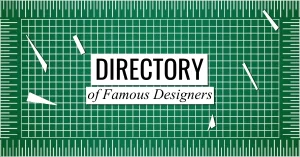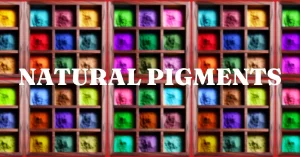Would you spend more than $500 on any item you’ve never used before? Perhaps you’ve seen it in an advert but that’s about it. No word of mouth, no friend’s recommendation, nothing. This is the problem Apple faced initially with their products. High-end smartphones, iPods and computers were all placed neatly on a glass shelf in a shop. While it looked appealing in a store, apple needed its users to sample the product before they were to shell out the big bucks. In this Apple Inc. design case study, we will see how interactive design, user experience and retail design were cleverly used to make Apple one of the best-selling smartphone companies in the world. Also, how Apple started setting new standards for customer engagement.
The Challenge: Beyond the Product
Apple’s products, synonymous with sleek design and cutting-edge technology, needed a retail environment that could complement their sophistication. The early Apple stores were functional but lacked the element of user experience that could turn a visit into an immersive journey. The challenge was not just to sell devices but to create an environment where customers could explore, discover, and receive support seamlessly.
The Transformation Begins: The Apple Store 2.0 Concept
The Genius Bar: A Hub for Technical Support
The highlight of this Apple Inc. design case study is the Genius Bar. Apple’s Genius Bar, introduced in 2001, was a pioneering concept in tech retail. It provided customers with a designated space where they could receive technical support and product advice. The interactive nature of the Genius Bar set Apple apart, fostering a one-on-one connection between Apple’s “Geniuses” and customers. This human-centric approach not only addressed technical issues but also served as an educational platform.
Introducing the iPod Bar: Elevating Personalisation
With the rise of the iPod, Apple recognised the need for a dedicated space to showcase and personalise the device. The iPod Bar, introduced in 2004, allowed customers to interact with the iPod and iTunes, customise playlists, and receive hands-on assistance. This move towards personalisation aligned with Apple’s ethos of making technology accessible and tailored to individual preferences.
The Theatre: Elevating Product Launches
In 2005, Apple introduced the concept of the theatre within its stores. This dedicated space was designed to host product launches and educational events. The theatre provided a platform for Apple to showcase its latest innovations, turning product launches into events that engaged and excited customers.
Apple Store’s Retail Design: The Era of the Flagship Stores
Iconic Architecture: Blending Aesthetics with Functionality
Apple elevated its retail game by investing in iconic flagship stores, marrying architecture with functionality. The Apple Store on Fifth Avenue in New York, with its iconic glass cube entrance, became a symbol of Apple’s commitment to making its stores not just places of commerce but landmarks that drew people in. The aesthetic appeal of these flagship stores was intentional, creating an immersive experience before customers even stepped inside.
The Retail Symphony: Seamless Integration of Devices
As Apple expanded its product lineup, the challenge was to integrate various devices seamlessly within the retail environment. The stores evolved to become showcases of the entire Apple ecosystem. Interactive displays allowed customers to explore how Macs, iPhones, iPads, and Apple Watches worked together, fostering a holistic understanding of the brand’s interconnected offerings.
Today at Apple: Transforming Stores into Creative Hubs
In 2017, Apple introduced “Today at Apple,” a program designed to turn Apple Stores into community hubs. The initiative offered free educational sessions covering topics such as photography, music, coding, and more. Customers could not only buy products but also participate in events that enriched their skills and creativity. The stores became dynamic spaces where customers were not just consumers but active contributors to the Apple community.
The Digital and Physical Fusion: Apple’s Retail App
Apple’s commitment to enhancing the customer experience extended beyond the physical store. The Apple Store app, introduced in 2009, allowed customers to browse products, make purchases, and schedule appointments for technical support or personal shopping. The app bridged the gap between digital and physical assistance, creating a seamless journey for customers with after-sales service.
The Impact: From Transactions to Transformative Experiences
Customer Loyalty and Advocacy
The interactive design and focus on customer experience elevated Apple’s retail stores from transactional spaces to transformative environments. Customers, drawn in by the experiential nature of the stores, became not just buyers but loyal advocates. The stores became destinations in themselves, attracting tech enthusiasts, creatives, and families alike.
Educational Empowerment
The emphasis on education within the stores empowered customers to maximise the potential of their Apple devices. Whether it was learning how to edit videos on a MacBook or creating music on an iPad, Apple Stores became educational playgrounds where customers could unlock the full capabilities of their devices.
Elevated Brand Perception
Apple’s commitment to design extended to its retail spaces, influencing the perception of the brand. The stores became physical embodiments of Apple’s design ethos—sleek, intuitive, and forward-thinking. The architectural brilliance of flagship stores added to the allure, reinforcing Apple’s image as an innovator.
Challenges and Evolving Strategies
Crowd Management
The success of Apple Stores brought its own set of challenges, particularly in managing crowds during product launches or events. Apple responded by implementing reservation systems for product launches and expanding store layouts to accommodate larger audiences.
Balancing Online and Offline Experiences
As online sales grew, Apple faced the challenge of maintaining the relevance of physical stores. The integration of the “Today at Apple” program, along with interactive elements, aimed to create a unique in-person experience that complemented rather than competed with online shopping.
Adapting to Changing Retail Landscape
The retail landscape is dynamic, with e-commerce and changing consumer behaviours influencing how people shop. Apple continues to adapt, exploring innovative concepts like the “Express” store format, which focuses on quick and efficient service.
The Future: Innovations on the Horizon
Augmented Reality (AR) Integration
As technology evolves, Apple is exploring ways to integrate augmented reality into its retail experience. AR could revolutionise how customers interact with products in-store, offering immersive demonstrations and personalised experiences.
Sustainability Initiatives
Apple is doubling down on its commitment to sustainability. Future retail designs may incorporate eco-friendly materials and energy-efficient features, aligning with Apple’s broader environmental goals.
Evolution of Virtual Retail
The COVID-19 pandemic accelerated the adoption of virtual retail experiences. While Apple’s physical stores remain crucial, the company is likely to continue investing in virtual platforms to offer a hybrid retail experience that caters to a diverse range of customer preferences.
A Blueprint for Experiential Retail
In this Apple Inc. design case study, we saw a journey from functional retail spaces to interactive hubs that serve as a blueprint for experiential retail design. The emphasis on customer experience, education, and seamless integration of digital and physical elements has redefined what it means to visit a retail store. As Apple continues to innovate, its retail strategy remains a testament to the power of design thinking, customer-centric approach, and the transformative potential of a visit to an Apple Store—an experience that goes beyond the purchase of a product to become a journey of exploration, learning, and inspiration.







0 Comments